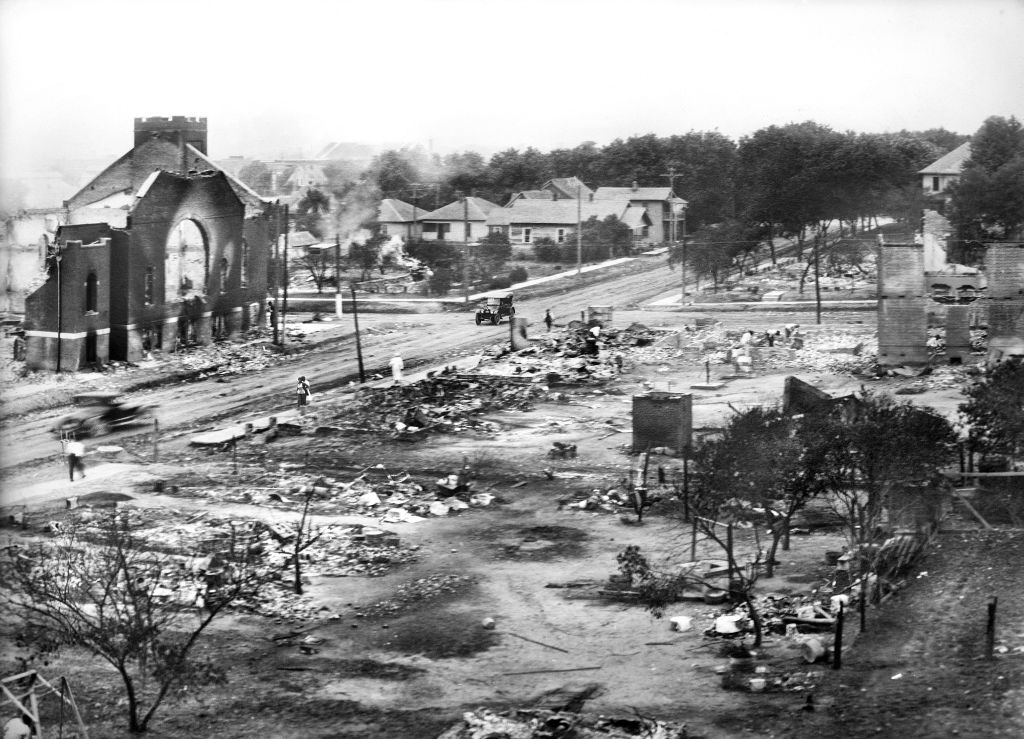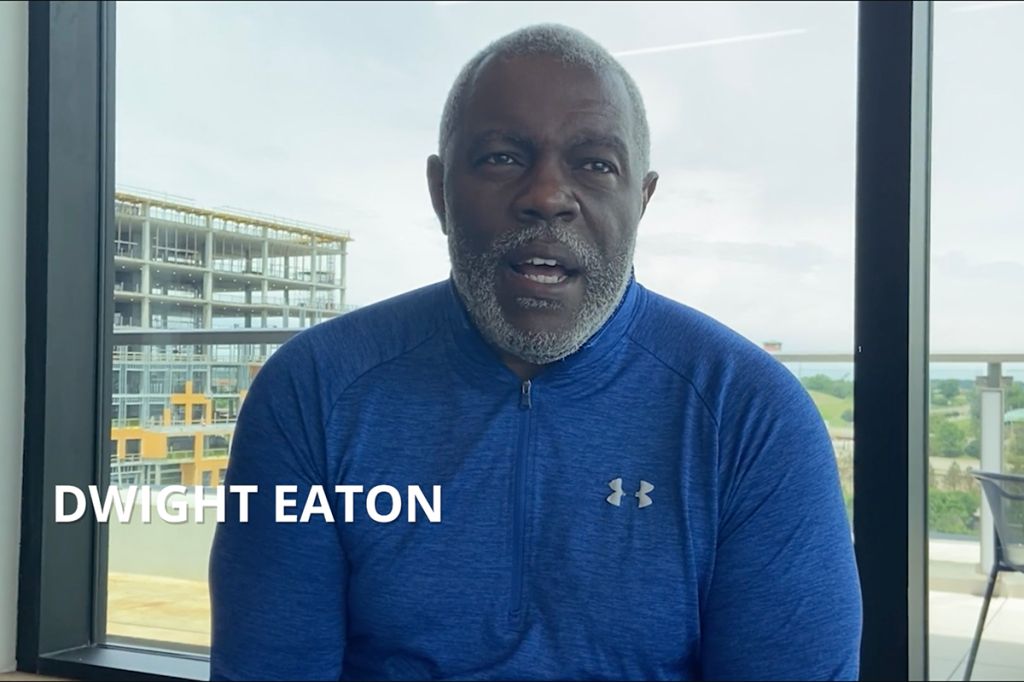Tulsa Race Massacre Descendants Speak Out, Honor And Protect Their Legacies
Honoring And Protecting The Legacy: iOne Digital In Conversation With Descendants Of Tulsa Race Massacre Survivors

Source: Universal History Archive / Getty
Six Greenwood descendants, representing three families, shared their moving reflections with iOne Digital about the 1921 Tulsa Race Massacre ahead of the commemoration of its centennial. With each learning about the massacre at varying ages in their respective lives, the descendants described a mix of pride in the resilience of their ancestors and frustration with the ongoing harm.
An elementary student when he first learned about the 1921 massacre, Bobby Eaton Sr. spoke of the way the history of Tulsa had been buried. Eaton would hang around his father, Joseph Eaton’s barbershop, listening to his father and friends talk about the past.

Source: iOne Digital / iOne Digital
Born in the late 1890s, Joseph came to Tulsa like many Black people looking to build a place of his own. After the massacre, he would be a part of those who were able to rebuild. Joseph’s legacy continues through his sons and grandchildren.
Unlike Bobby Eaton, Brenda Nails-Alford said she did not first learn of the massacre until she received a letter in 2003. The letter notified survivors and descendants about a lawsuit against the city of Tulsa for reparations. That letter sent Nails-Alford into research mode. She knew of her family’s history of entrepreneurship, but she didn’t know all that her grandfather and great uncle had endured.

Brenda Nails-Alford | Source: iOne Digital
Other speakers share their hope for greater awareness of the 1921 race massacre and other atrocities in the future. Teaching the history of what happened and the years of hiding the truth is a part of honoring the legacy of those who lost their lives 100 years ago. Dwight Eaton, Bobby’s son, said that if people learn about the Holocaust, they should also learn about what happened in Tulsa.
“The commemoration of the centennial of the 1921 Tulsa Race Massacre was imperative,” Stacie Gillian, co-founder of Maestra, a business strategy and social impact firm based in Brooklyn, New York. Owned and operated by women of color, Maestra is committed to creating a more socially conscious and equitable world. To that end, they have worked to create a slate of centennial events that honors the lives of descendants, survivors, and all those who were killed in Tulsa in 1921.
“Protecting and amplifying this once untold piece of the U.S. historical narrative is key,” Gillian told NewsOne. “It is our collective duty to continue to share the stories of these families—both survivors and descendants—most significantly to cast off the shadows of the past. Through these stories, generations to come will learn…and we will avoid allowing similar atrocities to occur in the future.”
When asked if massacre survivors and descendants were owed anything, four of the descendants said without hesitation reparations. For many, the case for reparations is clear. In 2001, a commission studying the 1921 Tulsa Race Massacre issued a final report with several recommendations. Direct payments to survivors and descendants were one of the recommendations. Twenty years later, and the fight continues.
SEE ALSO:
Biden To Unveil Efforts To Eliminate Racial Wealth Gap During Tulsa Race Massacre Centennial Speech

















